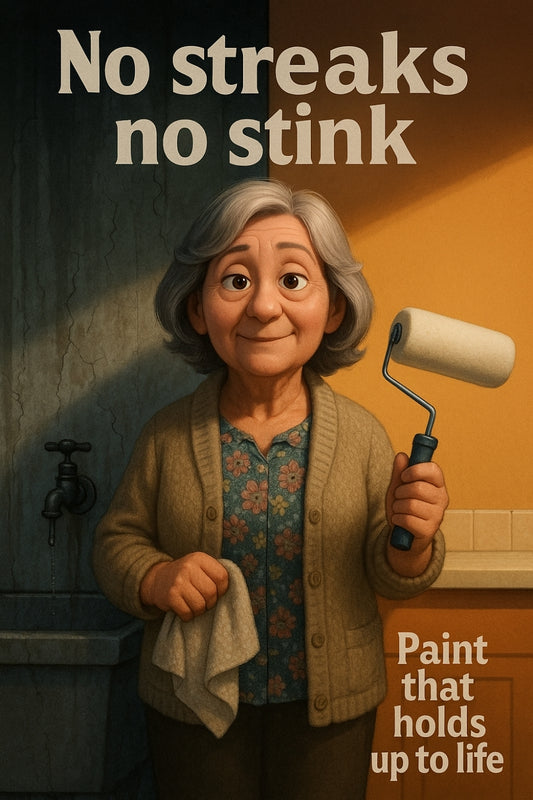
Haymes Paint fans, your well-loved brushes deserve better — rinse right or replace early.
Share
How to rinse, revive, and reuse your brushes and rollers — without wrecking them
You know that moment between finishing the final coat and collapsing on the couch with a cuppa? That sweet sigh of relief — job done. But wait... what about all those paint-soaked brushes and rollers in the sink?
Hold up. Before they harden into crusty relics, let’s talk clean-up. Done right, your brushes and rollers can live to paint another day (and the day after that). Here’s how to clean them properly — no mess, no fuss, and no ruined tools.
Why it matters: Clean gear = clean results
A well-looked-after brush glides like butter. A crusty one? Streaks, flakes, and frustration. Reusing your gear doesn’t just save cash — it protects your finish. Plus, there’s something oddly satisfying about hanging up a bristle that still looks fresh from the packet.
Quick stat: Paint tools can last up to 10x longer with proper cleaning and storage. Yes, ten.
Step-by-step: How to clean paintbrushes
Step 1: Know your paint
Clean-up starts sooner than you think — as in, when you choose your paint. Water-based paints (like acrylic or low-VOC options) are a breeze to wash out. Oil-based paints need a bit more love (and the right solvent).
- Water-based: Use warm, soapy water.
- Oil-based: Start with mineral turps or dedicated brush cleaner.
Step 2: Scrape, don’t soak
First, remove excess paint. Use the edge of your paint tin or a dedicated brush comb to scrape off as much as possible. Don’t let brushes sit in water – it weakens the glue that holds the bristles.
Step 3: Gentle rinse, proper swirl
In a clean container or sink, swirl the brush in warm, soapy water (or turps, for oil-based). Massage the bristles with your fingers, working from base to tip. Repeat with clean water until it runs clear. Change the water if it looks cloudy.
Step 4: Dry flat — always
Never stand brushes upright while drying. Water seeps into the handle, causing splits and shedding. Lay them flat or hang upside down. Bonus points if you gently reshape the bristles.
“Cheap brushes are disposable. Good brushes are heirlooms — if treated right.” — Candeece
How to clean paint rollers without becoming a human sprinkler
Step 1: Scrape the excess
Use a 5-in-1 tool or the side of a stir stick to remove excess paint from the roller. This makes the next rinse far more bearable (and your sink much less colourful).
Step 2: Spin and rinse
Rinse under warm water while squeezing gently with your hand. A gentle twist or spin (in a bucket or in the sink) helps loosen the paint. Keep going until the water’s clear. If using oil-based paint, follow up with solvent and a rinse.
Step 3: Dry with patience
Stand the roller on end to dry fully. Don’t squish it with towels — that affects its nap. Some people use a salad spinner — yep, really — to speed up drying. Just don’t borrow one from the kitchen. Ever.
Extra tips for lovers of crisp lines and smooth coats
- Brush combs: Worth their weight in gold for de-gunking at the base of bristles.
- Conditioner: A few drops of fabric softener in the rinse keeps bristles soft.
- Label your gear: Use painter’s tape to tag brushes for certain colours or types.
- Store smart: Wrap clean, dry brushes in plastic wrap or paper shucks to keep their shape.
One mindset shift that changes everything
Cleaning your tools isn’t the annoying bit after the fun ends. It’s the quiet, satisfying wrap-up — a time to reflect on a job well done and prep for your next project. It’s like washing your favourite coffee mug: a little ritual that keeps the good stuff going.
So next time you’re itching to quit at cleanup, remember: future-you will thank you deeply.
Happy painting,
Candeece

Stay Connected
Follow our Facebook Page: Strathalbyn H Hardware on Facebook



